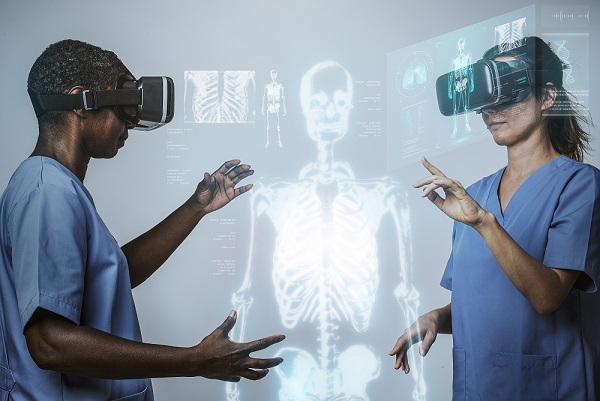
Blurring Realities: Augmented and Virtual Experiences
The Fusion of Real and Virtual Worlds
At the forefront of immersive technologies, Augmented Reality (AR) and Virtual Reality (VR) are reshaping our perceptions and interactions with the world. These technologies represent a fusion of real and virtual worlds, offering experiences that transcend the boundaries of traditional reality. Let’s delve into the realms of AR and VR, exploring how they are blurring the lines between what is real and what is virtual.
Augmented Reality Enhancements
Augmented Reality overlays digital information onto the real-world environment, enhancing our perception of reality. From smartphone applications that display information about landmarks to AR headsets that provide real-time data during tasks, AR seamlessly integrates digital elements into our everyday surroundings. The result is an enriched experience where the physical and digital coexist.
Virtual Reality Immersion
In contrast, Virtual Reality immerses users in a completely digital environment, disconnecting them from the physical world. VR headsets transport users to virtual realms, whether for gaming, training simulations, or virtual tourism. The immersive nature of VR creates a sense of presence, enabling users to interact with and navigate through entirely fabricated environments.
Applications Across Industries
AR and VR have found applications across diverse industries, each leveraging the unique capabilities of these technologies. In healthcare, AR assists surgeons with real-time information during procedures, while VR provides therapeutic experiences for patients. In education, AR brings textbooks to life, and VR offers immersive learning environments. From retail and architecture to entertainment and beyond, the applications are limitless.
Augmented Commerce and Virtual Adventures
With the rise of augmented commerce, AR is transforming the way we shop. Virtual try-ons allow customers to visualize products in their real-world surroundings before making a purchase. On the other hand, VR offers virtual adventures, from exploring fantastical worlds to participating in virtual events. The entertainment industry, in particular, has embraced VR as a platform for storytelling and immersive experiences.
Explore AR and VR Realms
To embark on a journey into the realms of Augmented Reality and Virtual Reality, discover the latest innovations, insights, and applications at Augmented Reality (AR) and Virtual Reality (VR). This platform serves as a gateway to understanding the dynamic landscape of AR and VR, providing a glimpse into the transformative possibilities these technologies offer.
Challenges in Immersive Realities
Despite the immense potential, AR and VR also present challenges. Motion sickness in VR experiences, hardware limitations, and the need for broader adoption are among the hurdles to overcome. Addressing these challenges is pivotal to realizing the full potential of immersive technologies and ensuring a seamless and enjoyable user experience.
Future Horizons of Immersive Technologies
Looking ahead, the future horizons of AR and VR are promising. Advancements in hardware, increased computing power, and the integration of AI are poised to enhance the capabilities of these immersive technologies. From more realistic simulations to augmented workplaces, the trajectory of AR and VR innovation holds exciting possibilities for the future.
Embrace the Blurring Realities
In conclusion, the blurring realities of Augmented and Virtual Experiences usher in a new era of perception and interaction. To embrace and stay informed about the latest developments, explore Augmented Reality (AR) and Virtual Reality (VR). The fusion of real and virtual worlds awaits exploration, offering a myriad of possibilities for both individuals and industries.
